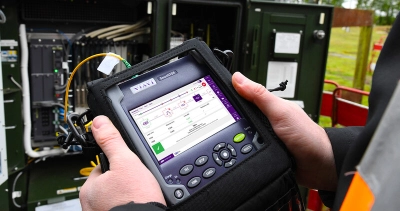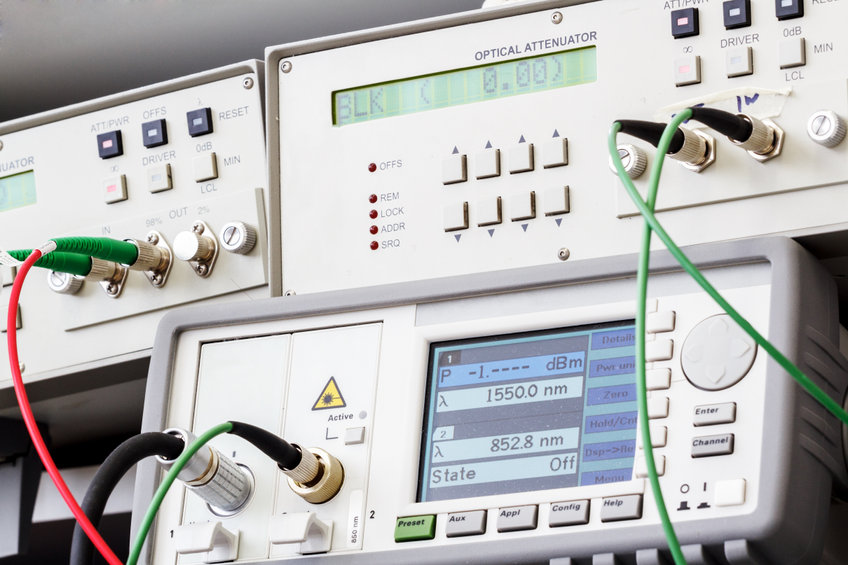High-performance fibre testing equipment is essential for reliable material quality assessment.
Discover the Importance of Optical Fibre Screening in Modern Telecommunications
In the realm of modern-day telecommunications, the relevance of optical fiber screening can not be overstated, as it acts as the backbone for making sure network integrity and efficiency. By implementing regular testing procedures, drivers can preemptively determine possible concerns such as signal destruction, thus protecting against interruptions that could show pricey. Advanced techniques like Optical Time-Domain Reflectometry play a critical function in this process, yet numerous may overlook the wider effects of these techniques. What are the certain benefits that regular screening offers, and exactly how might it shape the future landscape of telecommunications?

Recognizing Optical Fiber Screening
Optical fibre testing is a critical procedure in telecoms that guarantees the integrity and efficiency of fibre optic networks. This screening incorporates a variety of procedures made to examine the physical and practical qualities of optical fibres - optical fibre testing equipment. Key parameters examined include optical power loss, data transfer ability, and fault area, which are necessary for maintaining high-quality communication web links
The testing procedure usually involves making use of specialized tools such as Optical Time-Domain Reflectometers (OTDR) and Optical Power Meters. OTDRs are used to identify and define faults, mates, and adapters within the fibre, while power meters gauge the transmitted light signal toughness to determine performance.
Moreover, screening is conducted at various phases, including during installment, maintenance, and troubleshooting, to make sure that the network fulfills market criteria and operational demands. Conformity with standards set by companies like the International Telecommunication Union (ITU) and the Telecommunications Sector Organization (TIA) is critical.
Advantages of Normal Testing
Normal testing of optical fibers returns countless advantages that dramatically enhance network reliability and performance. One of the key advantages is the early detection of potential issues, such as breaks or deterioration in the fiber, which can lead to expensive downtime if left unaddressed (robotic vision). By identifying these problems proactively, telecommunications service providers can minimize service disturbances and make certain regular connection for their consumers
In addition, normal screening aids to preserve the integrity of signal top quality. As optical fibres age, their performance can be impacted by aspects such as environmental problems and physical anxiety. Routine analyses enable the monitoring of signal loss and overall transmission efficacy, guaranteeing that the network operates at ideal levels.
One more significant benefit is compliance with sector standards. Normal testing sustains adherence to regulatory needs, thereby mitigating legal and monetary risks connected with non-compliance. Furthermore, it enhances the general lifespan of the fibre framework by helping with prompt repair and maintenance.

Common Evaluating Approaches
Testing optical fibres utilizes different methods to make certain the integrity and performance of telecoms networks. Amongst one of the most usual methods is Optical Time Domain Name Reflectometry (OTDR), which assesses the entire length of the fiber by sending out a pulse of light and gauging the reflections triggered by flaws or breaks. This technique gives comprehensive info about the area and severity of faults.
One more prevalent technique is making use of Optical Power Meters, which determine the quantity of light sent via the fiber. This strategy aids establish the loss of signal toughness, guaranteeing that it meets market criteria. Furthermore, Visual Mistake Locators (VFL) are used to recognize breaks or extreme bends in the fibre by forecasting a visible laser light into the cable.
Insertion loss testing is also vital, as it measures the loss of signal power resulting from connections and splices within the network. The use of Polarization Mode Diffusion (PMD) testing evaluates the impact of fibre qualities on signal integrity.
Each of these methods plays an essential duty in preserving the performance and reliability of optical fibre networks, ultimately adding to smooth telecoms operations.
Effect On Network Efficiency
The stability and efficiency of optical fibre networks directly affect general network performance. In modern-day telecoms, the effectiveness of information transmission depends heavily on the top quality of the optical fibres used. Any type of destruction in the fibre's problem-- whether due to physical damages, contamination, or too much bending-- can result in raised depletion and signal loss, dramatically affecting information stability and rate.
Regular optical fiber testing is important to recognize and correct possible issues prior to they materialize as network failings or slowdowns. Methods such as Optical Time Domain Name Reflectometry (OTDR) and insertion loss testing make it possible for service technicians to measure the performance of fiber links properly. These tests not just examine the physical problem of the fibres however additionally guarantee conformity Read More Here with sector standards, thereby securing the network's reliability.
Additionally, a well-maintained optical fibre network adds to reduced functional costs and improved client contentment, as end-users experience fewer disruptions and higher information prices. Eventually, the emphasis on extensive optical fibre screening practices functions as a cornerstone for sustaining durable telecoms framework, ensuring that provider can satisfy the expanding demands for transmission capacity and connection in today's electronic age.
Future Patterns in Checking
As we look ahead, developments in innovation are poised to reshape optical fibre screening in telecommunications. The rise of automation and expert system (AI) is expected to enhance the efficiency and precision of testing processes. Automated testing systems can conduct extensive assessments with minimal human intervention, substantially lowering the possibility for errors and accelerating time-to-deployment.
Additionally, the combination of artificial intelligence algorithms will enable anticipating upkeep, enabling network carriers to anticipate prospective problems before they rise right into failures. This aggressive approach not just boosts network dependability however likewise optimizes functional expenses.
Another arising pattern is the development of mobile testing devices that use real-time analysis - robotic vision. These tools will empower technicians to do on-site diagnostics quickly, promoting quicker resolutions and improving service read this article high quality
The expansion of 5G networks better requires the advancement of testing methodologies. As transmission capacity demands raise, standard testing methods may no more are enough. Innovative remedies such as optical time-domain reflectometry (OTDR) and progressed spooky evaluation will certainly end up being important in ensuring the honesty and performance of high-speed connections.

Final Thought
In verdict, optical fibre testing is crucial for guaranteeing the integrity and reliability of modern-day telecoms networks. Regular screening techniques not just aid determine possible concerns such as signal loss and faults however likewise add to boosted network efficiency and consumer fulfillment. As the need for seamless connectivity remains to expand, the fostering of sophisticated testing methods will play a vital duty in keeping high-quality network requirements pop over to this web-site and sustaining the advancing landscape of telecoms.